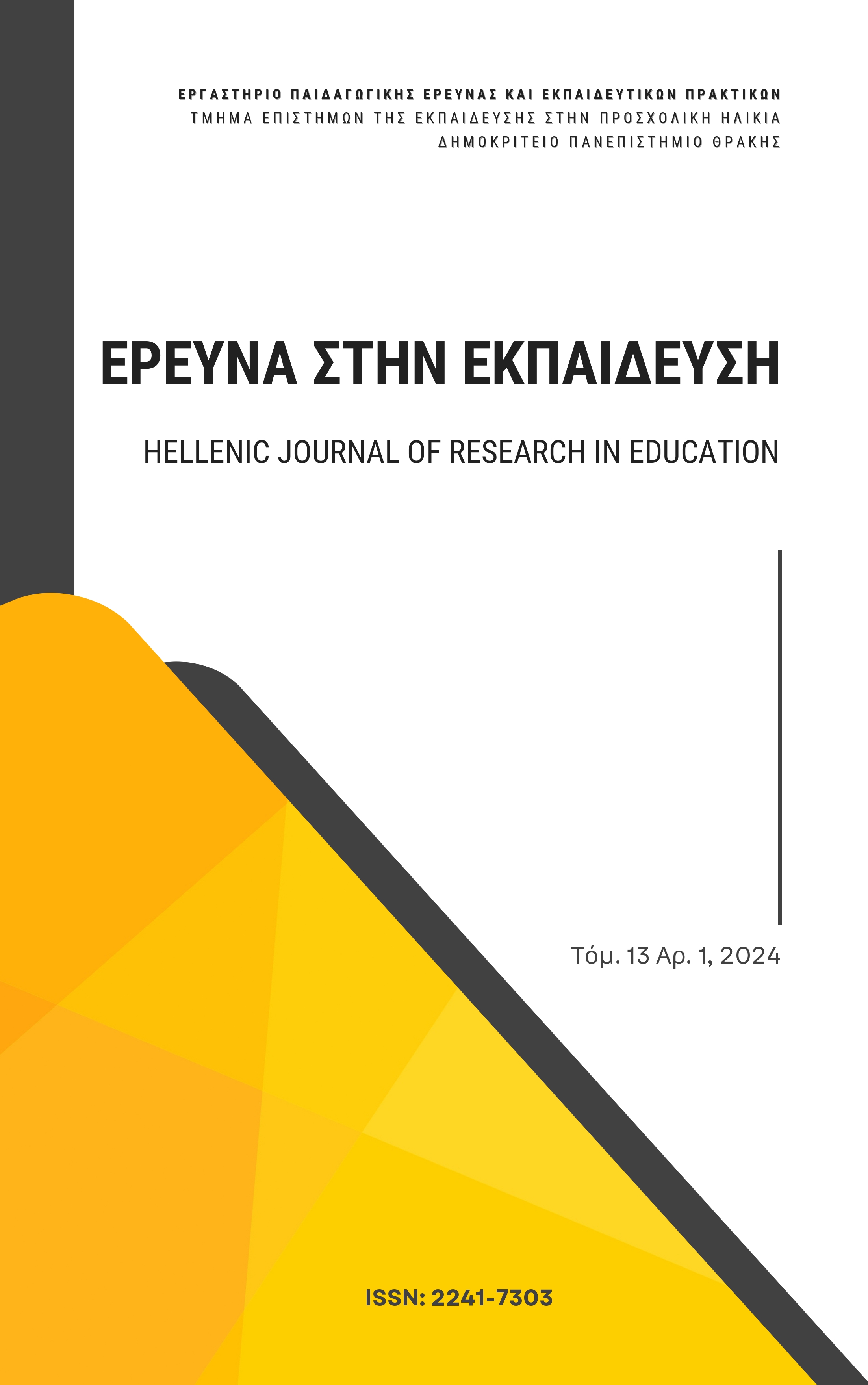Σχολική Δέσμευση και ικανοποίηση από τη ζωή σε μαθητές Δημοτικού σχολείου

Περίληψη
Προηγούμενες μελέτες εξέταζαν το φαινόμενο της σχολικής δέσμευσης (συμπεριφορική - γνωστική - συναισθηματική), κυρίως, μέσα από μοντέλα ελλειμμάτων, που εστίαζαν σε έννοιες όπως η σχολική διαρροή, οι απουσίες από το σχολικό περιβάλλον αλλά και η σχολική επίδοση. Στο πλαίσιο της παρούσας μελέτης η σχολική δέσμευση προσεγγίζεται μέσα από την οπτική της θετικής ψυχολογίας και της θετικής εκπαίδευσης με στόχο να αναδειχθεί μια νέα αναπτυξιακή προοπτική ενδυνάμωσης και ενίσχυσης των ικανοτήτων των παιδιών και να επεκταθούν οι εκπαιδευτικοί στόχοι προκειμένου να περιλαμβάνουν δράσεις και ενέργειες που προωθούν τη ψυχική ευημερία των μαθητών. Στη μελέτη συμμετείχαν 115 μαθητές της έκτης δημοτικού (44.3% αγόρια) που φοιτούσαν σε ιδιωτικά σχολεία της Αθήνας. Χορηγήθηκαν οι κλίμακες Πολυδιάστατη Κλίμακα ικανοποίησης από τη ζωή για μαθητές, κλίμακα Σχολικής Δέσμευσης και ένα αυτοσχέδιο ερωτηματολόγιο δημογραφικών στοιχείων στο οποίο ζητούνταν από τους μαθητές να αναφέρουν το φύλο, την ημερομηνία γέννησης, το αν έχουν αδέρφια, τον μέσο όρο επίδοσης της προηγούμενης χρονιάς στα μαθήματα των Μαθηματικών και της Γλώσσας και το επίπεδο εκπαίδευσης των γονέων. Η επιβεβαιωτική ανάλυση παραγόντων έδειξε ότι η κλίμακα της σχολικής δέσμευσης εμφάνισε ικανοποιητικούς δείκτες καλής προσαρμογής. Οι παράγοντες της σχολικής δέσμευσης συσχετίστηκαν θετικά με όλους τους παράγοντες της ικανοποίησης από τη ζωή. Οι υψηλότερες συσχετίσεις εντοπίστηκαν ανάμεσα στην ικανοποίηση από το σχολείο και τη συναισθηματική και συμπεριφορική δέσμευση. Διενεργήθηκε ιεραρχική πολλαπλή παλινδρόμηση με τη μέθοδο stepwise προκειμένου να ελεγχθεί η στατιστική πρόβλεψη της ικανοποίησης από το σχολείο από τους δείκτες της σχολικής δέσμευσης και δημογραφικούς παράγοντες. Η ικανοποίηση από το σχολικό περιβάλλον προβλέφθηκε από τους παράγοντες της σχολικής δέσμευσης α) συναισθηματική και β) γνωστική δέσμευση και από το φύλο. Δημογραφικοί και παράγοντες που σχετίζονταν με την επίδοση κατά την προηγούμενη χρονιά δεν συνέβαλαν στην πρόβλεψη της ικανοποίησης από το σχολείο. Όπως προέκυψε από μοντέλο δομικών εξισώσεων η λανθάνουσα μεταβλητή της σχολικής δέσμευσης εμφάνισε πλήρη διαμεσολάβηση ανάμεσα στη σχέση της ικανοποίησης από την οικογένεια και την ικανοποίηση από το σχολείο. Τόσο οι εκπαιδευτικοί όσο και οι πολιτικές εκπαίδευσης θα είναι χρήσιμο να συμπεριλάβουν δράσεις στο αναλυτικό πρόγραμμα και σε διαθεματικές δραστηριότητες για την προώθηση κοινωνικών και συναισθηματικών δεξιοτήτων και αλληλεπιδράσεων που θα έχουν ως αποτέλεσμα τόσο την αύξηση της σχολικής δέσμευσης όσο και της ικανοποίησης από το σχολικό πλαίσιο.
Λεπτομέρειες άρθρου
- Πώς να δημιουργήσετε Αναφορές
-
Τσουβέλας Γ., & Παπουλίδη Α. (2024). Σχολική Δέσμευση και ικανοποίηση από τη ζωή σε μαθητές Δημοτικού σχολείου . Έρευνα στην Εκπαίδευση, 13(1), 148–168. https://doi.org/10.12681/hjre.36849
- Τεύχος
- Τόμ. 13 Αρ. 1 (2024)
- Ενότητα
- Άρθρα

Αυτή η εργασία είναι αδειοδοτημένη υπό το CC Αναφορά Δημιουργού – Μη Εμπορική Χρήση – Παρόμοια Διανομή 4.0.
Τα πνευματικά δικαιώματα των άρθρων του περιοδικού ανήκουν στους συγγραφείς. Τα άρθρα διατίθενται με άδειες Creative Commons CC-BC-SA 4.0



